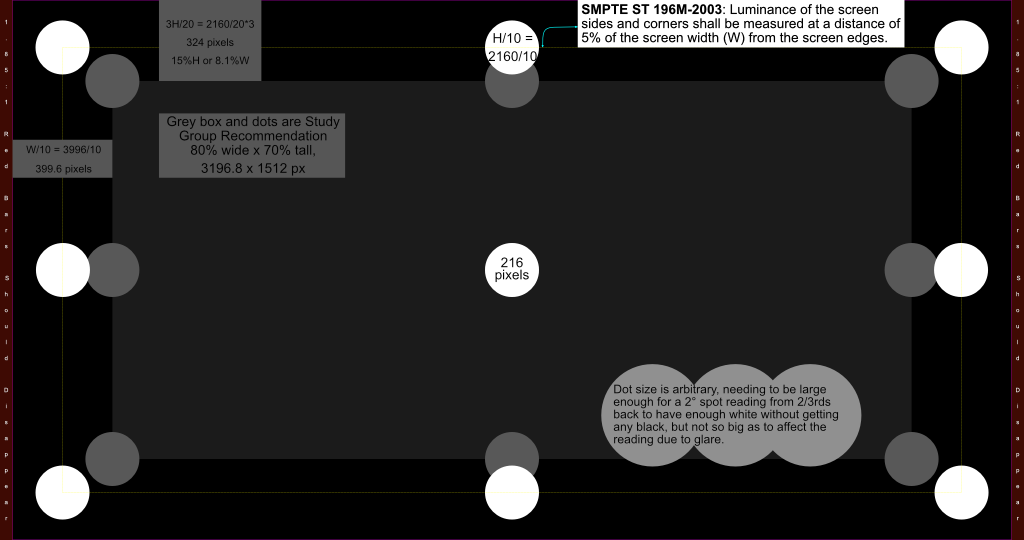- Version
- Download 2
- File Size 1,609.70 MB
- File Count 1
- Create Date 2019-05-12
- Last Updated 2019-08-01
This file explodes into two DCPs that run 1 minute of two TIFFs that are identical except that one is Scope and one is Flat.
Identical in that they are both 4K files, and both have 9 dots, and both use a dot that is 10% of the height of the screen – in the case of the Scope the dot is 172 pixels and the Flat is 216 pixels. They also are identical in that the dots are placed on a rectangle that is drawn according to the SMPTE ST 196M-2003 Standard, which says: "Luminance of the screen sides and corners shall be measured at a distance of 5% of the screen width from the screen edges..."
– therefore the internal 5% of width Scope rectangle is 4096 x .9=3686.4 pixels wide and 1716 - (4096 x .10)=1306.5 tall
[3686.4 x 1306.5]
and the internal 5% of width Flat rectangle is 3996 x .9=3596.4 x 2160 - (3996 x .10)=1760.4
[3596.4 x 1760.4].
It all works without putting the dots on the edges, or too close to the edges because the side dots are 10% of the height, which is smaller than the width, and the height dimension is mitigated by a width dimension being subtracted from it. The only oddity is that the dots really don't need to be larger for one format or the other. A person measuring 2/3rds back (or one half of the seating area) only needs to make their meter's 2° measuring spot fit into the white area comfortably, so that there is no chance that some of the black gets measured. Logically that dot can be the same for scope or flat, but for convenience of specifying the dots are a percent of the height. Otherwise the computation would have to be made of the subtended angle plus a bit for a room size of 'z'.
Anyway, 2 x 1 minute long SMPTE compliant DCPs with silence on 12 tracks. Good luck to us all. Report on your findings...for example, does the length of your auditorium require a larger set of spots?
Download Restricted: eMail for access.
To test the problem solutions: 2117 Test Plates 1a
